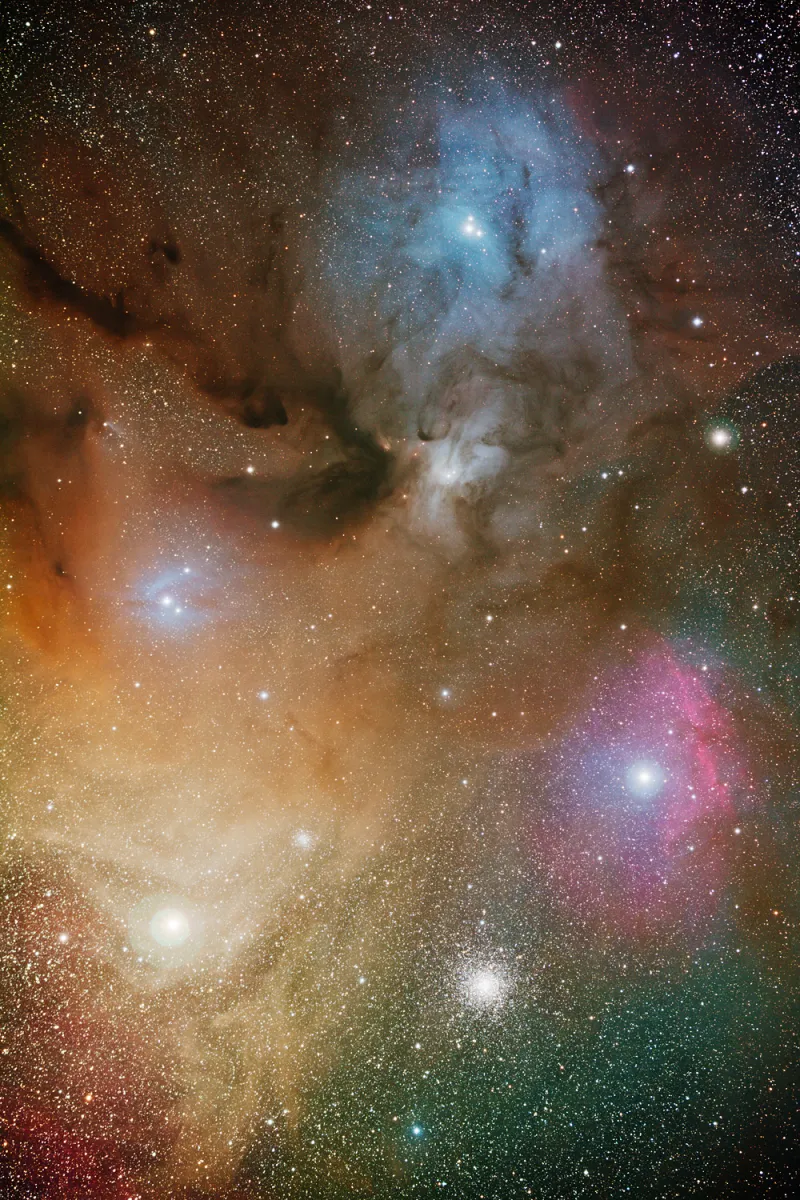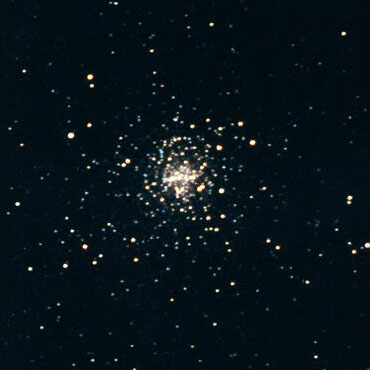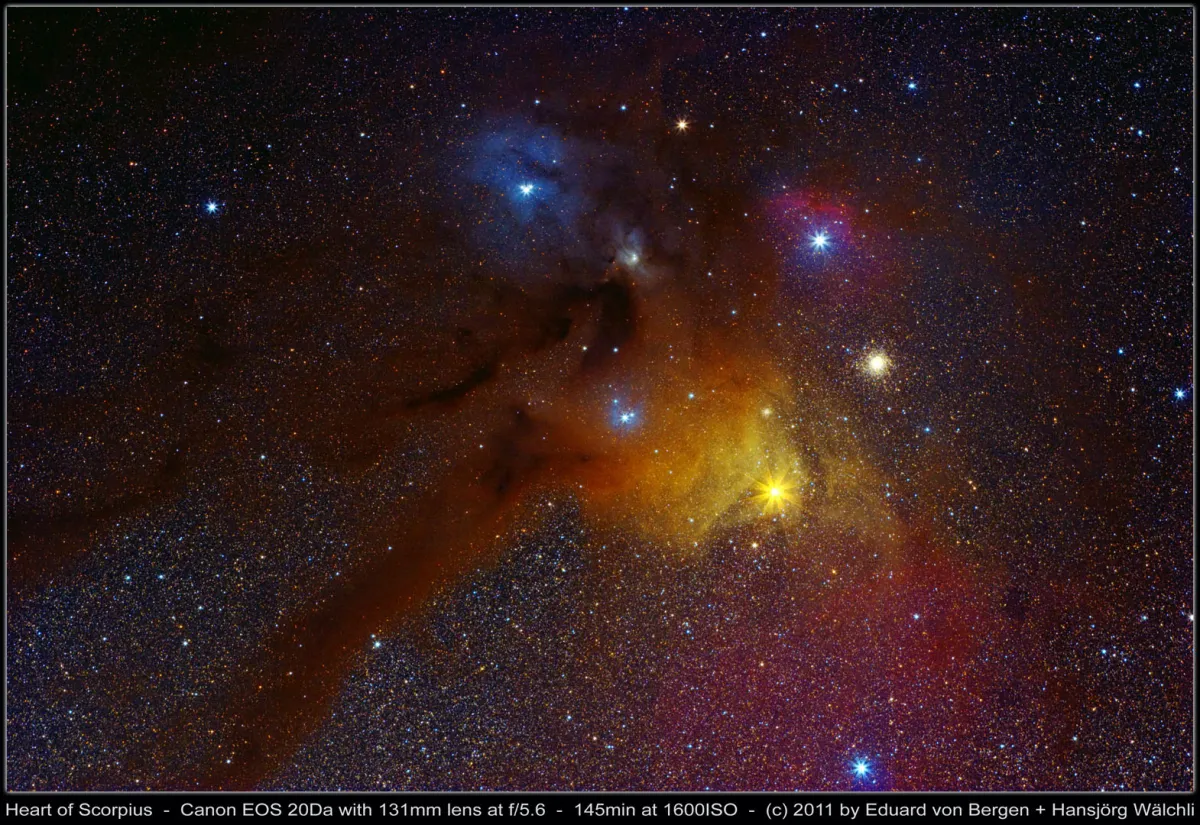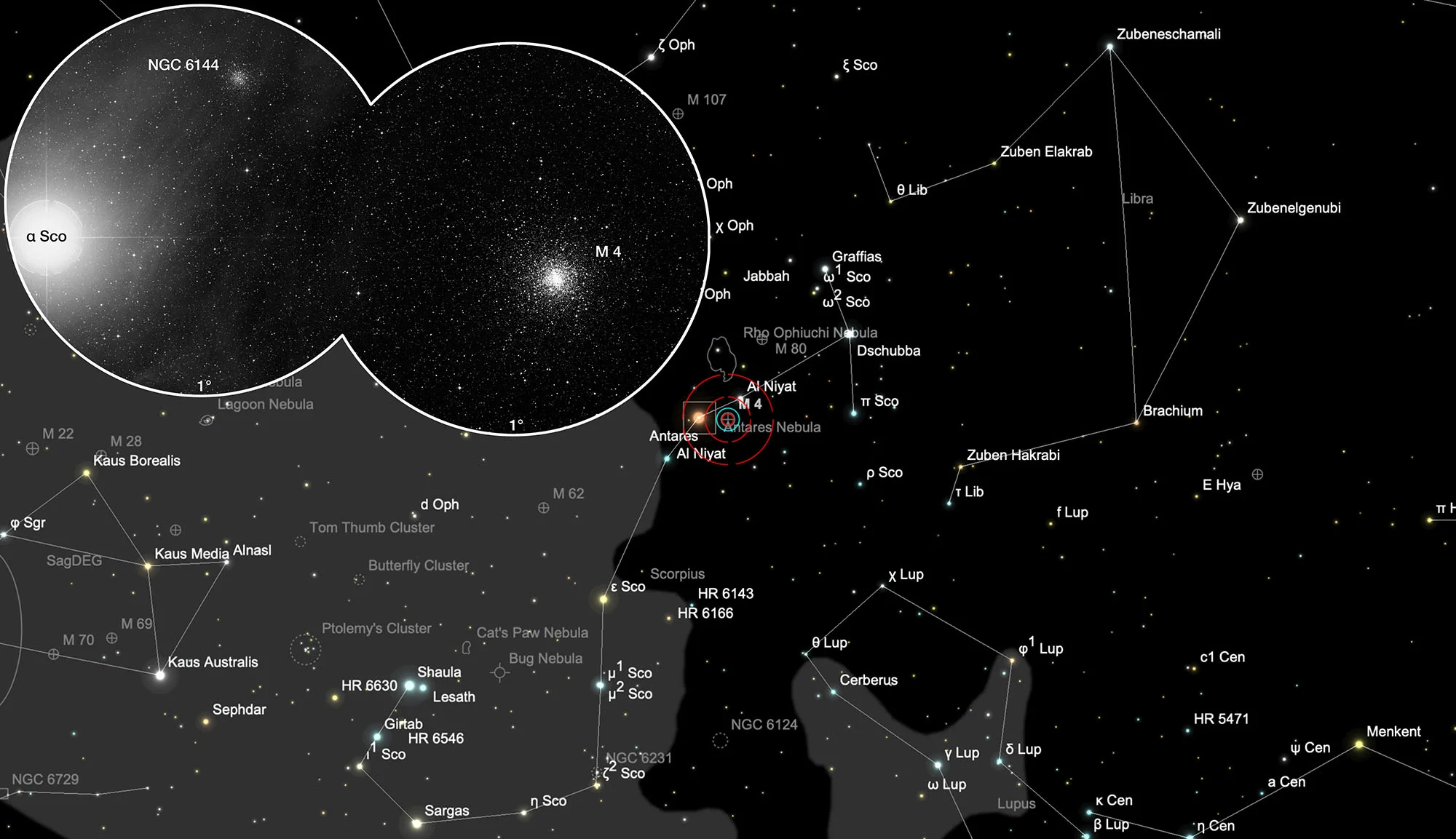Globular Clusters Messier 4 & NGC 6144

Messier 4
Messier 4 is a beautiful globular cluster, one of the largest and closest to us. It was first observed by Jean Phillippe Loys de Chéseaux in 1746 from Switzerland.
Nicolas-Louis de Lacaille observed the cluster in 1751-1752 from the Cape of Good Hope using a small refractor with only 0.5 inch aperture and two feet focal length. He listed the cluster as 9th entry in in his first list of nebulae with the notes: «It looks like a small nucleus of a weak comet.» [8]
Charles Messier observed it the first time on 8 May 1764, added it as fourth entry in his catalogue and wrote: «A cluster of very small stars; with a small telescope it can be seen in the form of a nebula; this cluster of stars is located near Antares and on its parallel. Observed by M. de la Caille, & reported in his Catalogue. Reviewed on January 30th & March 22nd 1781.» [281]
The globular cluster M 4 is one of the closest to the solar system. Distances vary from 5700 to 7500 light years and the cluster is moving away from us at a speed of about 65 km/s. More recent estimates tend to be in the upper range. The population is estimated to be a few hundreds of thousands of stars visible from earth-based telescopes. In addition, around 40'000 white dwarfs are suspected, the weakest of which have about a fortieth of the luminosity of the brightest in the cluster. Despite its relatively large angular diameter, M 4 is one of the smaller globular clusters in our Milky Way.

The Hertzsprung–Russell diagram of this cluster shows that the starlight is reddened by about 0.8 magnitudes due to dark clouds in this region. The brightness of the brightest stars is 10.8 mag and that of the horizontal branch in the HR diagram is 13.4 mag. [4]
The globular cluster M 4 was also the target of a study using the Hubble Space Telescope. A large number of «stellar corpses», so-called white dwarfs, were discovered. Using the measurement results, predictions about the cooling rate of white dwarfs can be refined - an important tool to be able to make reliable statements about the age of the Milky Way and the universe. White dwarfs are burned-out cores of collapsed stars that slowly cool down like a piece of embers and then go out. The universe is not yet old enough to accommodate completely burned-out and cold white dwarfs - so-called black dwarfs. Age estimates of the universe vary e.g. From eight to 20 billion (109) years old - paradoxically, the age of M 4 is estimated to be around 14 billion (109) years. M 4 is so old that all stars with at least 80% solar mass have already developed into red giants, followed by a collapse into a white dwarf. [175]
| Designation | NGC 6121 |
| Type | GCL (IX) |
| Right Ascension (J2000.0) | 16h 23m 35.5s |
| Declination (J2000.0) | -26° 31' 29" |
| Diameter | 36 arcmin |
| Visual magnitude | 5.4 mag |
| Metric Distance | 2.200 kpc |
| Dreyer Description | Cl, 8 or 10 B st in line, with 5 st, rrr |
| Identification, Remarks | GC 4183; M 4; GCL 41; ESO 517-SC1 |

NGC 6144
In the shadow of Messier 4 and the glare of the red giant Antares, behind the nebula of Sharpless 2-9, one can find NGC 6144, another globular cluster. It was found by William Herschel on 22 May 1783 and cataloged under the designation VI 10. Herschel's class «VI» stood for very compressed and rich star clusters. He described it as follows: «A very compact and concentrated, large cluster of the smallest imaginable stars, all of a somber red color. The next step to an easy-to-dissolve nebula.» [463] Dreyer described it as being of «considerable size, highly concentrated, brighter towards the middle and easily resolvable into individual stars». NGC 6144 has a very low central compression with a concentration index of 11 (1 = highest density). [4]
| Designation | NGC 6144 |
| Type | GCL (XI) |
| Right Ascension (J2000.0) | 16h 27m 14.1s |
| Declination (J2000.0) | -26° 01' 27" |
| Diameter | 7.4 arcmin |
| Visual magnitude | 9.0 mag |
| Metric Distance | 8.900 kpc |
| Dreyer Description | Cl, cL, mC, gbM, rrr |
| Identification, Remarks | WH VI 10; h 3629; GC 4193; IC 4606; GCL 42; ESO 517-SC6 |
Finder Chart
The two globular clusters Messier 4 and NGC 6144 are very easy to find. The beautiful red supergiant Antares (α Scorpii) is set in the telescope with a large field eyepiece and the telescope is then swiveled slightly towards the west. Voilà, there are the two little rascals. It really doesn't get any easier than that. The best time to observe is January to November, when the constellation Scorpius is highest over the southern horizon at night.
Visual Observation
400 mm Aperture: Already at low magnification, a straight line of stars running right through the core of M 4 is the most prominent feature of this globular cluster. Just outside the core area, two bright, closely spaced stars stand out among the tangle of countless fine stars. A fine sight. — 400 mm f/4.5 Taurus Dobsonian, Glaubenberg, 2. 8. 2022, Bernd Nies
